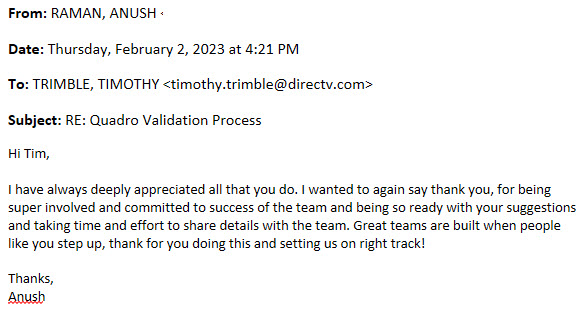Oh, gosh.
I had the privilege of working with some fantastic people at DIRECTV. Many of them were kind enough to post recommendations on LinkedIn. Thank you for the kind words.
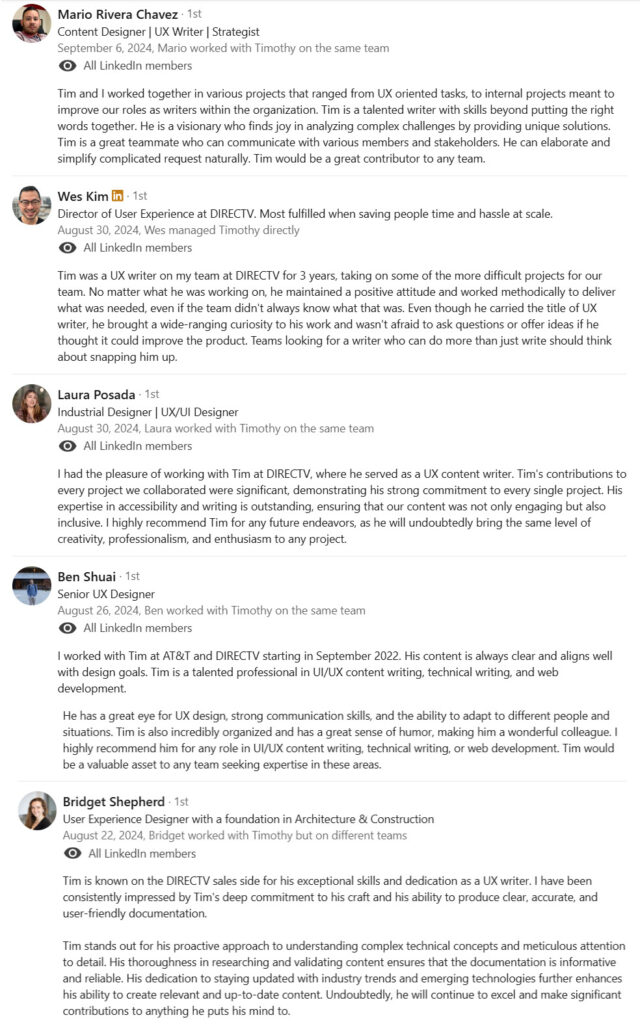
I had the privilege of working with some fantastic people at DIRECTV. Many of them were kind enough to post recommendations on LinkedIn. Thank you for the kind words.

What I have always loved about being in the computer technology field is the constant learning. Technology is constantly changing with new advances and new consumer demands. And it doesn’t matter how old I get; I see myself always learning and trying something new. I’ll never forget a student I met in the STEM lab while at Edmonds College. She was in her 70s. I was blown away when I heard she was studying astrophysics. That’s the type of person I aspire to be.
My three and a half years at DIRECTV as a content writer were excellent for expanding my mental horizons. I’ve always been a writer, but writing words to improve the user experience when using a website beyond “Push Here!” was a whole new perspective.
Writing for UI/UX differs significantly from writing books, articles, posts, and technical reviews, especially in a Twitterized, Instagrammed, and TikToked world. Attention spans are short; anything read on a webpage must be short, sweet, to the point, and appealing. I have Microsoft’s Manual of Style, the foundation of DTV’s content styling, and The Chicago Manual of Style, the biggest book on my bookshelves. I learned a lot by researching what other sites are doing and by writing detailed prompts in ChatGPT. I also read a lot on baymard.com, uxwritinghub.com, and the Nielsen Norman Group site at nngroup.com. However, one book I highly recommend is “Strategic Writing for UX” by Torrey Podmajersky, published by O’Reilly. I plan on writing a book review for it.

I learned a lot about accessibility testing and how important it is to ensure that the website can be used by people with physical challenges. (Thank you, Terri Hawkins.) One of the services we use is Level Access, which provides automated and manual accessibility testing. They have a plugin that works with all the major browsers. I also learned how to use the Mac Accessibility tools to read and navigate what is on the screen. Did you know you can be fined for not ensuring your website meets government accessibility standards? You can learn more here: W3C Web Accessibility Initiative.
Wow! This is one of the most amazing tools I have ever come across. I’m tempted to return to college for some courses to become a UX Designer. This is how excellent this product is to use. Figma is a collaborative cross-platform interface design tool. DTV has standardized all of its website design work with this tool, and they’re implementing their internal design system library called Fusion. I got involved with the migration and implementation process by writing training guides, recording training videos, and analyzing various Figma plugins for content management. I learned how to prototype and create animated mockup designs to simulate how various website components function.
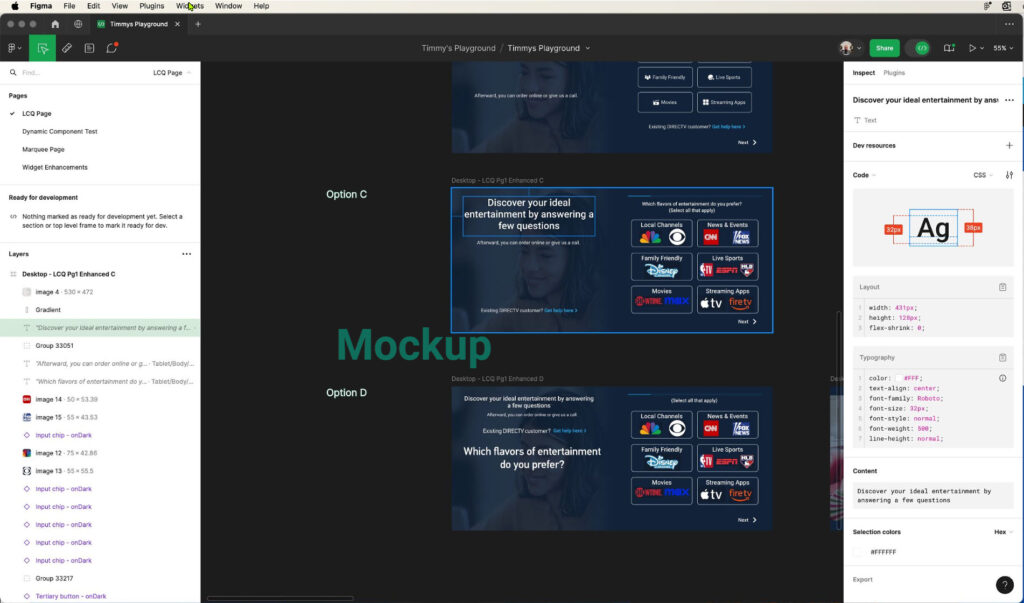
Learning is living! Don’t be afraid to tackle something new.

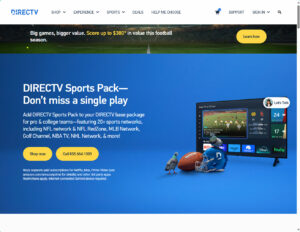
Within days of turning on the “Available for work” banner on my LinkedIn page, I received a note from a recruiter with Kforce asking if I would be interested in a one-year content writer contract with DIRECTV. Without hesitation, I responded positively. The rep sent me the job description, and I sent my resume. The next day, I had a video interview with the Director of UX. It was an excellent interview, and I was pretty upfront about my views of AT&T (who currently owned DIRECTV) even though DIRECTV was splitting off as their own company. I didn’t think I would get the job. The next day I had the job and the onboarding process began.
Generally, I knew I would be responsible for writing and editing copy for the website. But as I dove into the assignment, many light bulbs came on. I soon discovered I had been a “content writer” most of my life. I wince whenever I see a poorly written sign, advertisement, news header, or instructions – wanting to fix it. Now, it was my responsibility to quit wincing and start fixing.
For the first five months, I was assigned to help DTV Business with content for a site refresh. DTV Business caters to Restaurants, Hotels, Offices, and more. We worked with a vendor to provide the media graphics; our designer would build the UI for the pages, and I would provide the written content. I created a new MS Word document as a CRD, a Content Requirements Document. I would match a CRD with the designer’s Adobe XD design document. These would be reviewed, approved, and handed over to the developers. But there was a bit of a problem. We didn’t have a Producer assigned to the team to coordinate the assigned content and media movement. With agreement from my director, I assumed the role of Producer and Content Writer. There were a couple of long weekends, but we completed the business site refresh.
My following content writing assignments were for various teams and content, mainly for the new customer product selection and purchasing processes. It is incredible how often content has to be changed when dealing with websites that sell products and services. Many of those changes also require approval from the legal department. Product names, logos, trademarks, styling, and element grouping must be just right.

My assignment was with the Quadro team for most of the last two years of the contract. I feel pretty privileged to have been selected to be on this team. We referred to ourselves as the “Skunkworks” of DIRECTV. Our job was to develop new ideas and website components to drive traffic to the site and have better engagement with potential customers. And we didn’t follow the usual business processes. The team’s principal product manager would give us an idea of what he hoped to accomplish. We would have the entire team involved in a meeting. The manager, product owner, designer, writer, and development team will all be involved in discussing and determining feasibility.
Now, due to my extensive background as a developer, I slipped into the role of analyst. I would research the best approach, design, and content for the best results. I would then mock up some options and present them to the team. The PM would make a selection, and then we would hand it over to the designer. Once the design was completed and accepted, we would hand it over to the developers, who already had a head start since they were involved from the beginning of the request. This level of communication and involvement allowed us to provide solutions quickly.

One of the first questions I asked when I started with DIRECTV was if there was a Style Guide. I knew from my courses at Edmonds College that a style guide would be necessary to provide efficient and effective website content. The answer was, “Well, kind of…” There were font guides, color guides, a sort-of element guide, and an attempt at a content voice. But these were scattered about in different files and tribal knowledge.
The director who hired me was now a VP, and he asked for feedback from the team before attending an off-site strategic planning meeting. I mentioned how a Style Guide would be helpful, and I’m sure others noted the need for a Design System.
During the past two years, we migrated to Figma. The new Fusion Design Team has been busy designing and building atoms, molecules, elements, and components for the Fusion Design Library (based on Material UI.) I had the privilege of writing content for the Sharepoint-based Fusion Design Style Guide and content for the Fusion Design Library, and I recorded multiple training videos on how to use Figma, the Fusion Design Library, and how to integrate the Microsoft Visual Studio Code extension for Figma, for the developers. As my last parting project, I designed and developed a CRD template for Figma, which shows how to manage the copy content within the Figma design files.
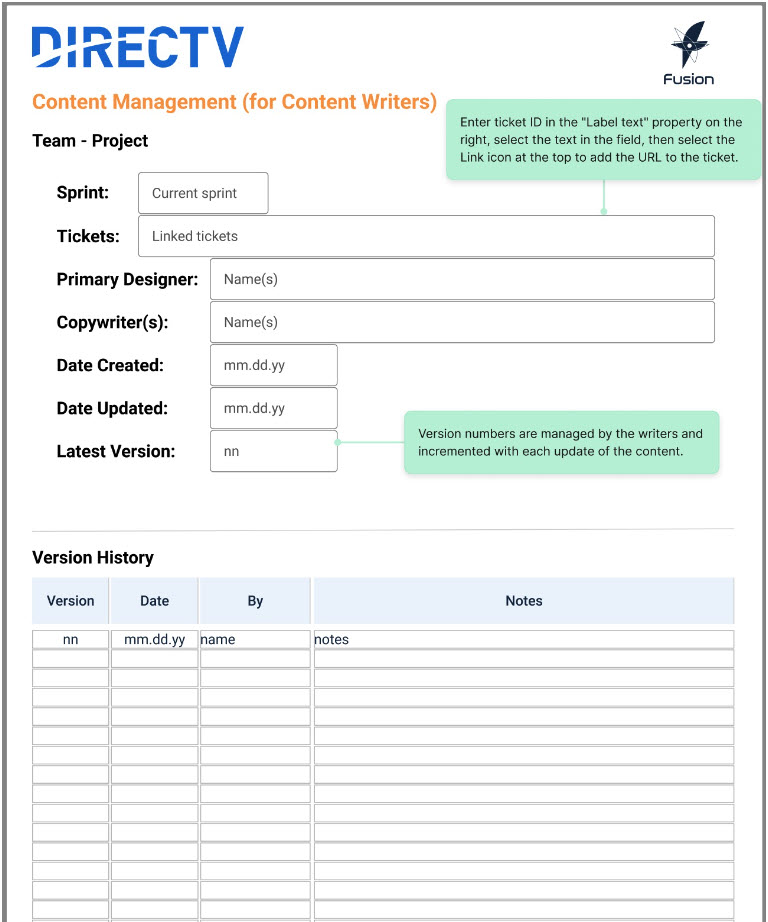
While I am sad to part ways with the DIRECTV team, I am very pleased that this contract lasted much longer than one year. My skills in UX content writing and research have been greatly expanded. I’ve learned how to do some design and prototyping in Figma and improved my video recording and editing processes. But mostly, I have met and made new friends in the UX/UI industry. Thank you, Kforce and DIRECTV, for the incredible time.
